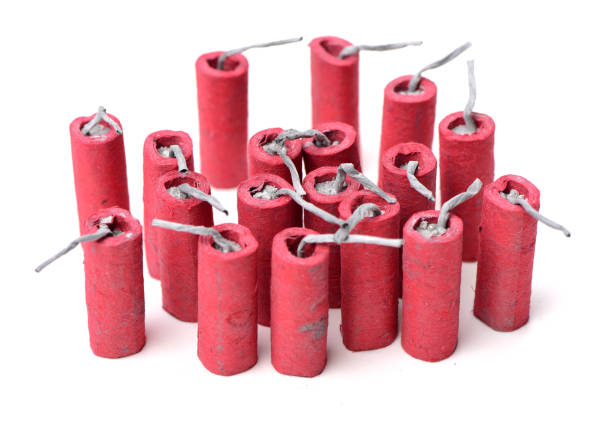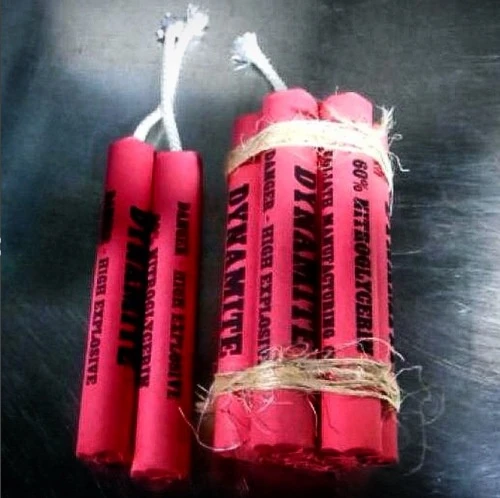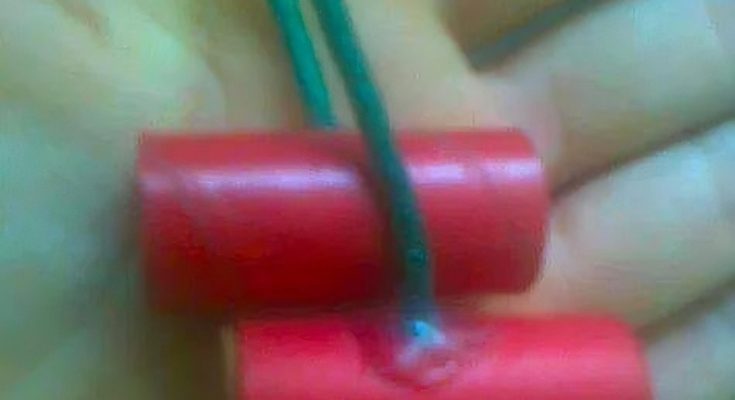The M-80 is a powerful type of firecracker that has a long history in the United States, both as a military tool and a consumer firework. Originally designed to simulate artillery fire, M-80s have since evolved into a highly regulated product. But what exactly are M-80s, and why are they so controversial? This article delves into the origins, construction, legality, and current regulations of these potent explosives.

The Origin and Construction of M-80s
M-80s were first developed for the U.S. military in the mid-20th century to simulate real explosions during training exercises. The “M” stands for “military standard,” while the “80” refers to the 80 grains (or 5.2 grams) of flash powder they originally contained. Over time, M-80s became popular in the consumer fireworks market, though with a reduced charge for safety reasons.
What Are M-80s Made Of?
An M-80 typically consists of a small cardboard tube, often red in color, measuring about 1.5 inches long and 9/16 inch in diameter. Here’s a closer look at its main components:
- Flash Powder: Originally, M-80s contained 5.2 grams of flash powder, but modern consumer versions hold around 3 grams.
- Cannon Fuse: A reliable fuse, known as Visco fuse, is used to ignite the firecracker. It extends from the side of the tube to allow for safe ignition.
- Paper Endcaps: Genuine M-80s use paper endcaps, unlike imitations that often have plastic caps.
This design makes M-80s one of the most powerful consumer fireworks, capable of producing loud explosions and significant force. However, it is the very power of M-80s that has led to stringent regulations.
Legality of M-80s in North America
M-80s are heavily regulated across North America due to their explosive power and potential for harm. Regulations vary by country and even by state or province, making it important to understand the specific laws that apply to these firecrackers.
M-80s in the United States
M-80s have been subject to federal regulation since 1966, following a series of incidents involving property damage and injuries. The Child Protection Act of 1966, enforced by the Consumer Product Safety Commission (CPSC), was one of the first laws to address the safety of consumer-grade fireworks, including M-80s.
Current U.S. Regulations
- M-80s, along with other powerful firecrackers like M-100s and cherry bombs, are classified as illegal explosives under the Federal Explosives Law. Only those with a federal explosives license (FEL), issued by the Bureau of Alcohol, Tobacco, Firearms and Explosives (ATF), are legally allowed to purchase or use them.
- Consumer-grade fireworks sold in the U.S. are limited to a maximum of 50 milligrams of flash powder, significantly lower than the 5.2 grams found in real M-80s.
- In some cases, federal and state officials distribute M-80s to farmers as wildlife control devices, but this use is strictly regulated.

While the manufacture, possession, and use of genuine M-80s are restricted, similar-looking firecrackers with reduced powder content are available. These imitations often have misleading names like “M-80 Firecracker” or “M-8000,” but contain only about 30 milligrams of flash powder—far below the original M-80’s capacity.
M-80s in Canada
In Canada, M-80s are illegal under federal law. Their importation, possession, transportation, storage, and manufacture are all prohibited. Canadian laws are generally stricter than those in the U.S., with additional restrictions on other types of firecrackers as well.
Imitation M-80s: Not the Real Deal
Due to the ban on genuine M-80s for general public use, many manufacturers produce fake M-80s designed to mimic the look of the original. These imitations are often sold under various names and are intended to create a similar auditory effect while complying with legal limits.
How to Spot a Fake M-80
Fake M-80s can be identified by their construction:
- Lower Flash Powder Content: These imitations contain no more than 50 milligrams of flash powder, as opposed to the 5.2 grams in genuine M-80s.
- Plastic Endcaps: Unlike real M-80s, which have paper endcaps, fakes often use plastic caps for easier mass production.
- Protruding Fuses: The fuse of an imitation M-80 may protrude from the ends, while genuine M-80s have fuses extending from the side.
Consumers are often misled by the size of these firecrackers, assuming that the entire tube is filled with explosive material. In reality, the powder is contained within a smaller capsule inside the tube, surrounded by plaster or a similar material.
M-80s vs. Dynamite: Clearing Up the Myths
A common misconception about M-80s is that they are equivalent to a quarter stick of dynamite. However, this is far from the truth.

Key Differences Between M-80s and Dynamite
- Explosive Material: M-80s use low explosives like flash powder or black powder, which are designed to produce loud bangs and smoke. In contrast, dynamite contains nitroglycerin-based high explosives, making it far more powerful and dangerous.
- Intended Use: Dynamite is primarily used for industrial purposes like mining or demolition, while M-80s are intended for recreational use as fireworks.
- Explosive Power: The 5.2 grams of flash powder in an M-80 is nowhere near the force generated by dynamite, which is capable of blasting through rock or concrete.
While M-80s can cause serious injuries if misused, their destructive power is not comparable to that of dynamite.
Safety Concerns and Risks of M-80s
Despite being illegal for general public use, genuine M-80s and their imitations can still be found on the black market. The high explosive content of M-80s makes them particularly hazardous, as they can cause severe injuries and even death.
Potential Risks of M-80s
- Hand Injuries: The powerful blast from an M-80 can cause significant damage to hands and fingers, resulting in burns, fractures, or amputations.
- Hearing Damage: The loud bang produced by an M-80 can lead to hearing loss or other ear injuries if detonated in close proximity.
- Fire Hazards: M-80s can easily ignite fires, especially if used improperly or in dry areas.
Conclusion: The Dangers of M-80s and the Need for Regulation
While M-80s have a storied history in the U.S., their potential for harm has led to their regulation and prohibition in many areas. Understanding the differences between genuine M-80s, legal imitations, and other types of explosives is crucial for safety.
If you encounter genuine M-80s or their illegal imitations, it’s best to avoid handling them and report their presence to local authorities. Ultimately, safety should always come first when it comes to fireworks and other pyrotechnics.



